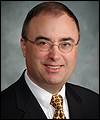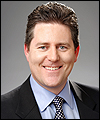At the March 1, 2011, PR News PR Measurement Conference in Washington, D.C., we honored five of the most influential measurement practitioners in the business with their induction into the Measurement Hall of Fame. This first crop of inductees will serve as benchmarks for Hall of Famers in years to come—much like Bob Dylan, an early inductee into the Rock and Roll Hall of Fame, did.
However, while Dylan’s answers were blowin’ in the wind, our Measurement Hall of Famers have got the answers right here, right now—to questions posed at a recent PR News roundtable discussion. As you will see, while their measurement expertise is great, their enthusiasm in imparting insight and knowledge to fellow communications pros is even greater.
Our Measurement Hall of Fame inductees, class of 2011: Frank Ovaitt, Tim Marklein, Donna Coletti, Kathy Collins and Dr. James Grunig.
PR News: What are your proudest accomplishments in measurement?
 |
| Frank Ovaitt |
Frank Ovaitt: First, the five years I spent as president and CEO of the Institute for Public Relations, and 10 years as a trustee before that. Like no other organization in our field, IPR stands for research and measurement. I’m proud to have played a role in tripling our programming and resources.
Second, teaching applied research in the Strategic Public Relations master’s program at The George Washington University Graduate School of Political Management. The first time I taught the course, I took a time out to ask my students how it could be improved. “We never expected it to be enjoyable,” was one of the answers. I decided to take that as a positive comment.
 |
| Donna Coletti |
Donna Coletti: In the early 1990s, when I was early in my career at Texas Instruments, I began measuring our PR results from both a quantitative and qualitative standpoint. I took the attributes that created consideration and preference with customers from our customer tracking study and correlated PR association with these attributes to demonstrate that PR was influencing customer consideration.
This was a fairly new measurement approach at the time. It was instrumental in proving PR’s value to the business and showed how we supported business objectives. This measurement program led to PR measurement being institutionalized across TI’s entire PR organization when it was under my management. We still have a very strong measurement culture within TI.
.jpg) |
| Kathy Collins |
Kathy Collins: The two things I’m proudest of are routinely getting the voices of employees and retirees included in stakeholder research brought to senior management (previously the general public, customers, media and legislators were included), and the initial globalization of communications research tools at GM. Both were difficult to accomplish, took the cooperation of a lot of people around the world to achieve and met with many roadblocks along the way (which kept the processes interesting). Both moved communications research forward and they allowed a more strategic view of the function.
.jpg) |
| James Grunig |
James Grunig: I’d say the development of a comprehensive set of objectives and measures of these objectives that could be used for planning and evaluating public relations programs such as employee, media, community, customer, government, member or financial relations. I began to think about these objectives when I worked as a consultant for an AT&T measurement project in the 1970s.
PR News: What will people be talking about in PR measurement in 2012 and beyond? Where is measurement heading?
 |
| Tim Marklein |
Tim Marklein: We see a big opportunity around inline analytics. This is analysis that overcomes distinctions between online and offline. Right now there are tools available that measure two or three things really well. But there’s a need for tools that can measure eight or nine things well across online and offline, and we’ll see more of those types of tools in this year and beyond.
Another trend we’ll see is a shift beyond thinking about measurement as a back-end, after-the-fact activity. The notion of metrics and analytics is taking hold across the business. It won’t be about analyzing a campaign, but about making analytics a living and breathing part of the enterprise.
Grunig: This question can be addressed in two ways: Where do I fear measurement might be going and where would I like to see it go? I fear that measurement might be overwhelmed by a marketing emphasis on publicity, media coverage, reputation, Web page and blog hits and the like. Public relations is much more than messaging and media coverage, and is about much more than “reputation” as measured by the favorability of media coverage or attitudes toward a company measured in large-scale surveys. And, measurement should be about much more than just “measurement.”
What I would like to see is an emphasis not just on measurement as used in evaluation research. Rather, I would like to see professionals thinking about using research in PR, not just measurement. Research is both formative and evaluative—that is research to identify problems, publics and issues that a public relations staff needs to address as well as research to evaluate when communication programs designed to cultivate relationships with these publics meet their objectives.
Collins: PR measurement really is like a hearing aid. It takes a lot of noise, filters out the background noise and leaves you with a clear signal you can understand. Ultimately, PR measurement is designed (if it’s good measurement) to improve decision making. We’re now past looking at AVEs and clip books and onto more substantive metrics like outcomes and outgrowths. But we still have a long way to go to integrate across media types and understand how they affect decision making collectively. We still take separate feedback to management from different types of media when we run a program because there isn’t a way to integrate across types of media to come up with an overall media impact score of an event, for example.
Coletti: People will still be discussing how to measure effectiveness of social media, and how social media can contribute to an organization’s objectives. People will also be talking about how to tie social media, digital media, Web and traditional communications into a single dashboard to demonstrate effectiveness and value to an organization.
I also believe that conversion tracking, campaign optimization, marketing mix modeling and predictive analysis will also continue to be hot measurement topics in 2012 and beyond. As measurement systems evolve and become more sophisticated, our ability to measure a number of communications indices will increase.
PR News:Who, or what, has had a big influence on your measurement work?
Ovaitt: I have known and worked for decades with Dr. Don Wright (professor of public relations at Boston University). Don is usually the first person I call with any type of research question. I also must recognize Jim (Grunig), whom I met very early in my career. He was consulting with AT&T to develop groundbreaking methods to prove the value of our communications in regulatory proceedings. What I learned from Jim about research caused me to rethink my approach to every public relations assignment.
Grunig: The PR professional who influenced me most was Jim Tirone, who headed AT&T’s measurement program in the 1970s. He sought me out to work with his team on the measurement project, when I was barely into my thirties, because of an article I had published in Public Relations Review on employee communication. Jim had completed all of the course work for a PhD in psychology, but he stressed the importance of the practical application of theory to me. “How can we actually do this?” he asked many times.
Coletti: Katie Paine and I worked closely together on my early PR measurement efforts. We worked together to develop new techniques that weren’t being used in PR measurement.
PR News: What’s the one piece of measurement advice you would give to our readers?
Grunig: The greatest deficiency in the practice of public relations is not the lack of measurement but, instead, the lack of conceptualization—i.e., thinking. Measurement has no value if it is not preceded by careful thinking about who are the publics with which an organization needs a relationship, what problems and issues are produced by that relationship, and what is the most effective type of program to cultivate those relationships. Too often, PR people do what they see other PRs people doing (most likely, messaging, publicity and “getting the message out”). Too seldom do they do formative research to identify publics and problems, listen to publics, set objectives that indicate the problems have been solved and measure those objectives for specific publics.
Coletti: Measure as much as you can and be creative.
Marklein: Keep it simple. The challenge for those of us who do this for a living is how to make this understandable to a PR person not steeped in measurement, or a CEO who wants to quickly know the impact of communications.
Ovaitt: I’m going to borrow from Doug Pinkham, who is president of the Public Affairs Council. Each fall, Doug delivers a guest lecture for my master’s level research course. He shows one slide that says in big letters: “Resist the pressure to quantify performance before you define your value to the success of the organization.” Good advice. PRN
CONTACT:
Donna Coletti, [email protected]; Kathy Collins, [email protected]; James Grunig, [email protected]; Tim Marklein, [email protected]; Frank Ovaitt, [email protected].
